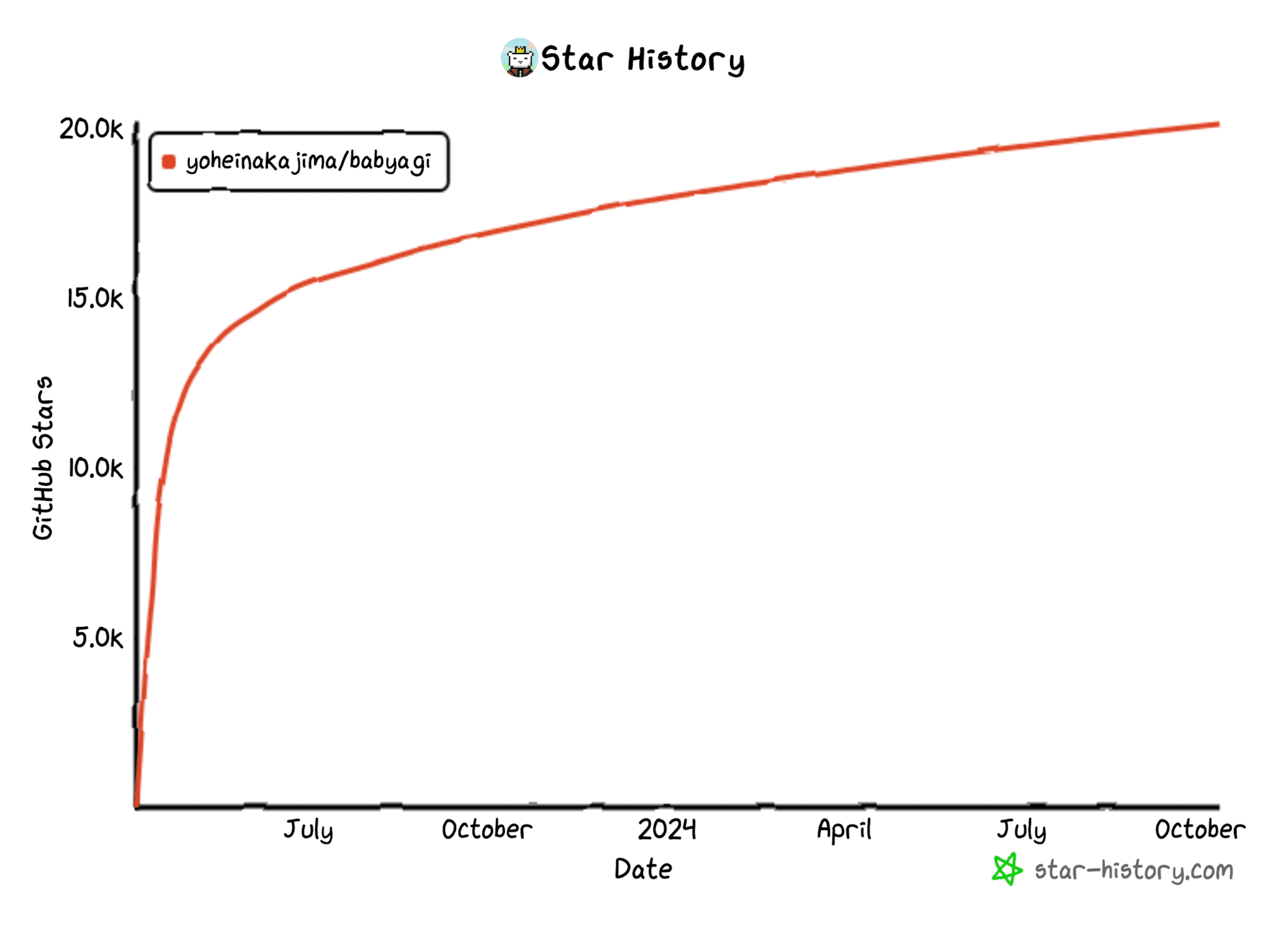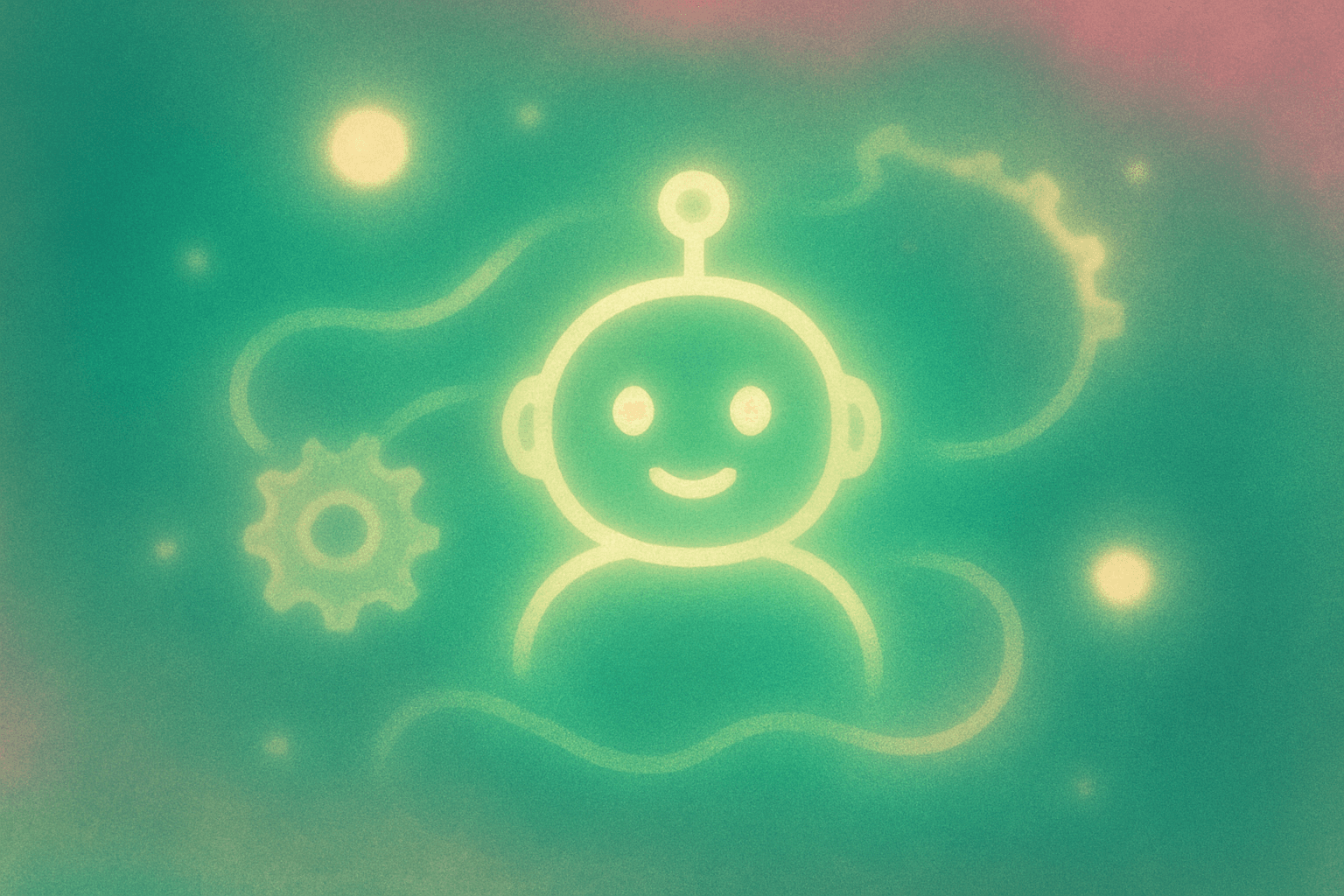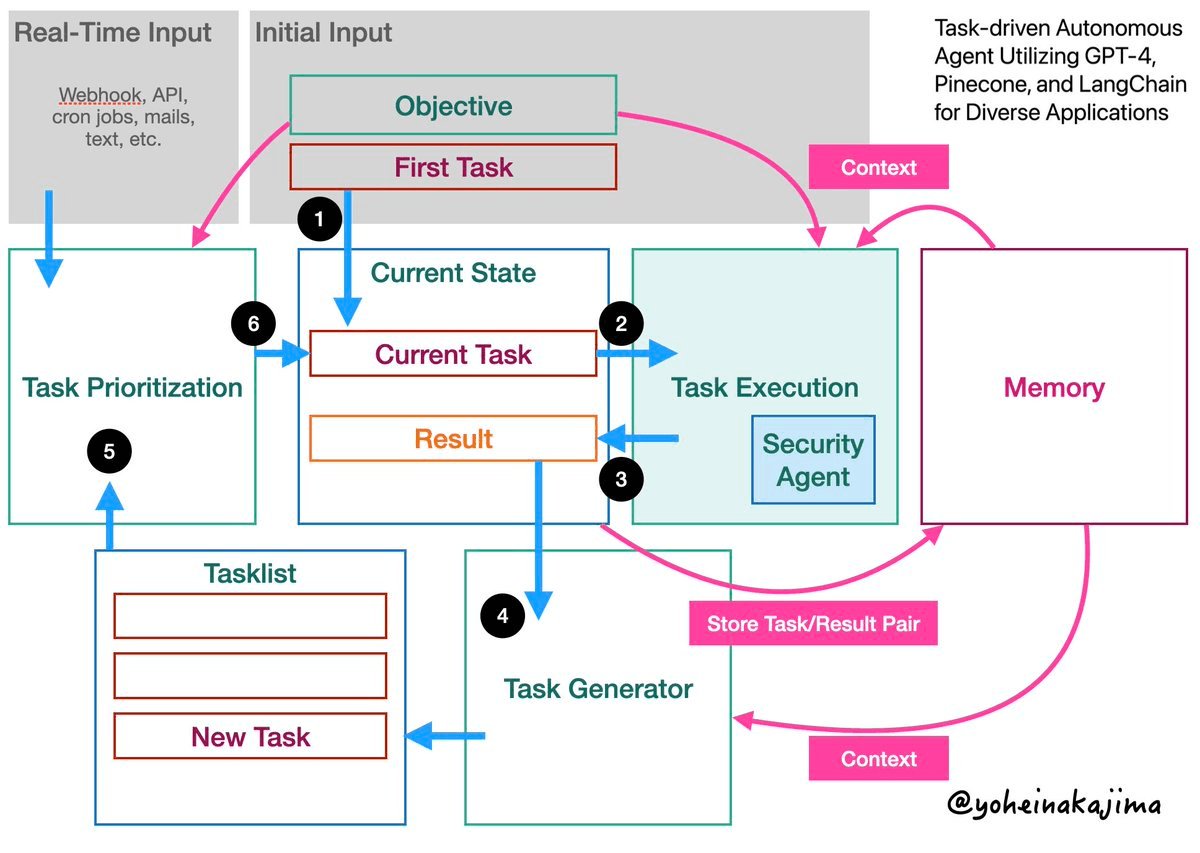
In today’s fast-paced world, task management is crucial for achieving efficiency and productivity. Enter BabyAGI, a cutting-edge system that uses GPT-4, vector databases, and autonomous agents to revolutionize how we handle tasks. But what is BabyAGI, and how does it operate? Let’s dive into how this innovative platform is reshaping the landscape of AI development and task automation.
What is BabyAGI?
At its core, BabyAGI is an autonomous AI agent designed to automate a broad spectrum of tasks, from the simplest to the most complex. Created by Yohei Nakajima, a venture capitalist and coder, BabyAGI was originally conceived as a way to automate routine tasks Nakajima encountered in his work as a VC, such as researching new technologies and companies. Built using OpenAI’s API (specifically GPT-4) and powerful vector databases like Pinecone and Weaviate, BabyAGI quickly evolved into a much more versatile system, gaining widespread attention for its task planning capabilities.
Launched in March 2023, BabyAGI became the first popular open-source autonomous agent with the ability to plan and execute tasks without human intervention. The project quickly went viral, garnering millions of impressions on Twitter and earning tens of thousands of GitHub stars. It’s been cited in academic research and covered by major media outlets, solidifying BabyAGI’s place as a significant breakthrough in AI.
By installing BabyAGI, users unlock a powerful tool that automates task execution through an easy-to-use interface. Its adaptability allows it to manage a wide range of tasks, making it a valuable asset for developers, businesses, and individuals alike. Despite Nakajima not having a formal background in programming, his innovative approach to building in public and experimenting with AI technologies has made BabyAGI a standout project in the AI community.

Task Execution and Task Prioritization: The Engine Behind BabyAGI
One of the standout features of BabyAGI is its capability to automate task execution. Once you define a given objective, BabyAGI handles the rest. From creating the initial task to task planning, the system ensures that each task is properly prioritized and executed based on its importance.
Through task prioritization, BabyAGI decides the execution chain—a process in which tasks are arranged based on urgency, complexity, and previous task results. This allows BabyAGI to optimize workflows, ensuring that each next task contributes to achieving the overall objective.
Task Management: Keeping Everything on Track
With BabyAGI, task management goes far beyond what typical systems offer. Not only can BabyAGI manage various tasks autonomously, but it can also handle task lists and new tasks that arise during the course of a project. Tasks are continuously refined, with BabyAGI using natural language processing to create human-like interactions and adapt to changing priorities.
In addition, BabyAGI integrates with vector databases, ensuring that task results are stored, retrieved, and applied efficiently to upcoming objectives. This dynamic process makes it possible to track progress while allowing previously completed tasks to inform the creation of new objectives.
BabyAGI on AI Development: Solving Complex Issues
Beyond task management, BabyAGI has vast implications for AI development. By automating a range of tasks based on predefined goals, BabyAGI can aid in tackling real-world challenges, such as optimizing supply chains, conducting research, or even attempting to solve world hunger.
By automating the creation and management of tasks, BabyAGI frees up time for users to focus on strategic thinking, problem-solving, and innovative approaches. The impact of BabyAGI on AI development cannot be overstated, as it transforms the way we handle complex issues that require high-level analysis and decision-making.

How BabyAGI Operates: From the Initial Task to the Final Result
BabyAGI operates in a smart, cyclical process that mirrors human decision-making. Here’s how it moves from the first task to achieving the final objective:
Setting the Objective
The process begins with the user defining a high-level objective for BabyAGI. This could be anything from solving a business problem to conducting research. This objective acts as the foundation for all future actions BabyAGI will take, guiding its task creation and prioritization.
Task Creation
Using GPT-4, BabyAGI breaks the objective down into actionable tasks. These tasks are specific steps that push toward the overall goal, such as analyzing data, gathering research, or strategizing solutions. Each task is stored in a vector database like Pinecone, ensuring tasks are tracked and ready for future reference if needed.
Task Prioritization
Once tasks are created, prioritization ensures BabyAGI focuses on what’s most important first. It evaluates the urgency, dependencies, and resources required to determine the optimal order of execution. This prioritization ensures that the most impactful tasks are completed first, improving efficiency.
Task Execution
With tasks prioritized, BabyAGI starts executing tasks one by one. It uses the OpenAI API to carry out tasks like data analysis or decision-making. As BabyAGI works, it continuously evaluates the task’s results, enhancing them with additional insights or context if needed, and stores these results for future use.
Generating New Tasks
After executing a task, BabyAGI evaluates the results and uses this information to generate new tasks. It creates tasks that are necessary to move closer to the objective while ensuring there’s no overlap with existing ones. This keeps the task pipeline moving forward efficiently.
Evaluation and Adjustment
BabyAGI doesn’t stop once a task is completed. After each execution, it reassesses the progress and adjusts its approach if necessary. It may add new tasks or shift priorities based on what has been achieved so far. This ensures that BabyAGI remains flexible and continues to adapt as it works toward the objective.
By following this continuous loop of task creation, execution, and refinement, BabyAGI ensures it remains focused on the original goal while constantly improving the process. This cyclical nature allows it to adapt to changes, optimize results, and move toward the final objective with efficiency.

Customization and Flexibility: Meeting Specific Needs
BabyAGI is designed to meet specific user requirements by offering a customizable and flexible task management system. Whether you’re handling a broad spectrum of tasks in a startup or dealing with complex tasks in research, BabyAGI adapts easily. You can start by setting an initial task and allow the system to generate new tasks as you progress. The entire task list can be customized to suit your workflow.
For easy integration, users can create API keys, including the OpenAI API key, to ensure smooth operation. Once you install BabyAGI, it enables seamless management of tasks based on your objectives, ensuring efficiency in prioritizing tasks and following through with the right approach. BabyAGI also tracks previous tasks, using the outcomes to refine its approach and inform future actions.
The BabyAGI work process is fully customizable, allowing developers to adjust workflows to specific needs. Whether you’re looking to modify how tasks are prioritized or how BabyAGI handles task execution, the system provides flexibility, enabling users to achieve objectives more efficiently while keeping an evolving task list based on the current progress.
Future of BabyAGI: Breaking Limitations and Expanding Horizons
While BabyAGI is already proving its worth by automating tasks and managing complex workflows, the latest version continues to push boundaries. As more people begin to use BabyAGI, its ability to handle more complex issues and larger tasks will only grow. Though it faces current limitations, particularly for non-technical users, the platform’s cutting-edge development promises exciting new possibilities.
Expanding Capabilities
The open-source nature of BabyAGI allows developers worldwide to contribute, enhancing the system’s ability to handle a broader range of tasks. As more people create API keys and integrate BabyAGI into their workflows, its capacity to solve complex issues will only grow. This increased versatility may soon enable BabyAGI to tackle large-scale global challenges, such as solving world hunger or managing intricate research projects.
Overcoming Current Limitations
Despite its impressive capabilities, BabyAGI still faces limitations, particularly when it comes to accessibility for non-technical users. The current setup process, which includes configuring the env file and integrating OpenAI’s API, may pose challenges for those without coding experience. However, future iterations are expected to streamline these processes, making the platform more user-friendly and accessible to a wider audience.
Integration and Scalability
In the near future, we can expect BabyAGI to integrate with more advanced technologies, improving its execution timeand scalability. The ability to adapt and incorporate larger task lists, handle one task or multiple tasks simultaneously, and adjust based on following objectives will further enhance its value. With better integration across platforms, BabyAGI could become an essential tool for AI development, allowing users to automate even more task-basedoperations and generate valuable insights.
New Horizons in AI Development
As BabyAGI’s human-like cognitive simulation improves, it may become a cornerstone for developing more advanced AI systems. Its adaptive learning capabilities could bridge the gap between narrow AI applications and artificial general intelligence (AGI). With the continued support of a global developer community, BabyAGI is poised to revolutionize not only how we manage tasks but how we approach problem-solving on a grand scale. The future of BabyAGI work lies in breaking down complex challenges and expanding its reach to new, uncharted territories.
By building on its current strengths and addressing current limitations, BabyAGI’s future looks bright, offering the potential to change how individuals and organizations approach task automation and project management.
Conclusion: The Power of BabyAGI
With BabyAGI, task automation reaches unprecedented levels of efficiency and intelligence. But what is BabyAGIbeyond just software? It’s a system that not only automates tasks but simulates human-like cognitive processes, empowering users to handle complex workflows seamlessly. Whether it’s managing a detailed task list, breaking down objectives into one task at a time, or following objectives through to completion, BabyAGI adapts to the needs of your specific environment.
The power of BabyAGI lies in its ability to continuously learn from prior tasks, generating task-based solutions while optimizing its performance. By leveraging OpenAI’s API, users can efficiently execute complex tasks and make informed decisions, minimizing the overall execution time and maximizing results. Setting up BabyAGI is straightforward: simply create API key and configure the env file to integrate it with your existing systems. From there, the original BabyAGI begins working autonomously, following each step in the task loop to ensure smooth execution.
What makes BabyAGI transformative is its versatility. Whether you’re looking to improve workflow automation, explore advanced AI development, or handle everyday tasks, BabyAGI offers a glimpse into the future of work. By introducing it into your processes, you’re not just adopting a tool, you’re unlocking a new way of thinking about productivity, where every task list is intelligently managed, and every task is executed with precision.
So, as you implement BabyAGI, the question becomes: What will be your first task?